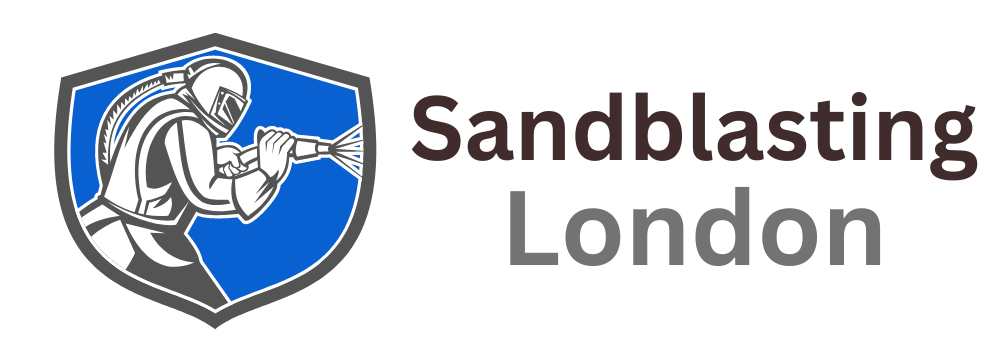Exploring the Benefits of Wet Sandblasting for Surface Cleaning
Surface cleaning is essential in maintaining the aesthetic and functional qualities of various surfaces, from brick walls to industrial machinery. One of the most effective and environmentally friendly methods for this is wet sandblasting. This technique has become increasingly popular for its ability to remove tough stains, rust, and other contaminants without the mess or environmental impact of traditional dry sandblasting. In this post, we’ll explore what wet sandblasting is, its benefits, its applications, and why it’s an excellent choice for various surface cleaning needs.
What is Wet Sandblasting?
Wet sandblasting is a process that combines abrasive materials (like sand or glass beads) with water to clean surfaces thoroughly. Unlike traditional dry sandblasting, which can produce large amounts of dust, wet sandblasting minimises airborne particles by using water, making it cleaner and more environmentally friendly. The addition of water also helps to control the heat generated during the process, reducing the risk of surface damage and creating a smoother finish.
How Wet Sandblasting Works
The wet sandblasting process involves blasting a mixture of water and abrasive materials onto the surface in need of cleaning. The abrasive material, typically sand, mixes with water in a pressurised tank before being sprayed onto the target surface. The combination of water and abrasive creates a powerful cleaning action that can remove paint, rust, and even tough stains embedded deep within the surface material.
Key Benefits of Wet Sandblasting for Surface Cleaning
1. Effective Dirt and Rust Removal
Wet sandblasting is highly effective at removing dirt, rust, paint, and other unwanted materials. The process is powerful enough to penetrate deep layers, making it suitable for surfaces that have accumulated extensive staining or rust over time.
2. Reduced Dust Production
One of the main advantages of wet sandblasting is its reduced dust production. Unlike dry sandblasting, which can produce a cloud of dust, wet sandblasting adds water to the abrasive material, which traps dust particles and prevents them from becoming airborne. This makes it a cleaner option, especially for environments where dust control is critical.
3. Enhanced Surface Preparation
Wet sandblasting is excellent for preparing surfaces for further treatments such as painting or coating. By creating a smooth, clean finish, it allows paint or other coatings to adhere better, leading to longer-lasting results.
4. Versatile Use on Various Surfaces
Wet abrasive blasting is suitable for many surfaces, including metal, concrete, brick, and wood. This versatility makes it a valuable option for a wide range of applications, from home renovation to commercial property maintenance and industrial equipment cleaning.
5. Environmentally Friendly
Wet sandblasting is considered eco-friendly because it does not require chemical cleaning agents, reducing the risk of chemical runoff. Additionally, the reduced dust production makes it a safer choice for operators and the surrounding environment.
Applications of Wet Sandblasting
1. Home Restoration
Wet grit blasting is often used in home restoration projects. It’s an effective method for cleaning brick walls, patios, driveways, and stonework. Whether you’re restoring an older property or simply refreshing the look of exterior surfaces, wet sandblasting offers a reliable solution that doesn’t damage the underlying materials.
2. Commercial Uses
Businesses can benefit from wet sandblasting to maintain and prepare surfaces, especially in high-traffic areas like warehouses, shop fronts, and car parks. This method ensures surfaces are clean, visually appealing, and ready for repainting or sealing.
3. Industrial Use
In industrial settings, wet abrasive blasting is used to clean equipment, remove rust from metal surfaces, and prepare machinery for maintenance or repairs. The reduced dust production is particularly advantageous in confined industrial spaces.
Comparing Wet Sandblasting to Other Surface Cleaning Methods
- Pressure Washing: While pressure washing is effective for general cleaning, it may not be powerful enough to remove rust, paint, or tough stains. Wet sandblasting offers a more thorough clean for heavy-duty requirements.
- Dry Sandblasting:
Though similar in concept,
dry sandblasting produces more dust, which can be difficult to control and hazardous in enclosed spaces. Wet sandblasting, on the other hand, is cleaner and less likely to damage the surface.
- Chemical Cleaning: Unlike chemical cleaning methods, wet sandblasting does not introduce harmful chemicals into the environment. This makes it a preferable choice for those concerned about environmental impact and operator safety.
Safety and Environmental Considerations
Wet grit blasting requires certain safety measures, including the use of protective gear to prevent injury from the high-pressure stream. Proper ventilation is also essential when working indoors, though the water in the process significantly reduces dust. Environmentally, wet sandblasting is a responsible choice, as it limits dust and reduces reliance on chemicals, aligning with modern standards for safe and sustainable cleaning.
Wet blasting has proven to be a highly effective, versatile, and environmentally friendly method for surface cleaning across residential, commercial, and industrial settings. With benefits such as reduced dust, powerful cleaning capabilities, and suitability for a wide range of surfaces, wet sandblasting is an ideal choice for preparing surfaces for painting or restoration. Whether for removing tough stains, rust, or old paint, wet sandblasting delivers impressive results that are difficult to achieve with other methods.
At Sandblasting London, we pride ourselves on delivering top-quality wet sandblasting services tailored to meet the unique needs of our clients. Our team of experienced professionals uses state-of-the-art equipment to ensure that each job is completed safely and effectively. We prioritise customer satisfaction by providing reliable, dust-controlled cleaning solutions that leave your surfaces looking new. Choose Sandblasting London for unparalleled expertise and a commitment to the highest standards in surface cleaning.
Check our GBP update about the benefits of wet sandblasting for surface cleaning.
Service Areas
Give us a call today!
